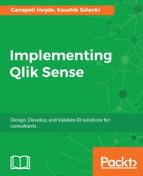Hand-holding is the part of a project area where a consultant makes the end users comfortable using the software. Though you may have created best of documentation and training materials, a user may still need initial guidance and comfort.
An analogy to make this understandable can be of driving a car. Say you haven't driven a car and have decided you want to commute to your office by a car. You decide to buy a car. When you buy a car, the car manufacturer gives you its manual. You can also search internet for learning videos. All of these can help you get over the initial jitters of driving a car. But are these good enough for you to get on the road and drive like an expert. The answer is an obvious NO.
You need initial hand-holding to get over the nuances of driving a car. Firstly, you need to get hang of all the controls. You need to get hang of the judgement of using steering wheel. The same goes with adjusting mirrors for optimum view. Depending on transmission, whether it's manual or automatic, you need to learn and adjust accordingly. Is this knowledge enough ? Frankly speaking, the answer is again NO.
As a driver, you need to get familiar with real life driving conditions. Driving in traffic is different from cruising on a highway. You also need to get parking skills, especially if it's parallel parking. You also need to get familiarized with driving in night, as this is a different ball game compared to driving in day light. Same goes with driving in difficult conditions, such as rain or snow. Driving can also throw different challenges in form of driving on winding roads or steep uphill driving, and many more
Imagine a user who is new to analytics. He/She has now suddenly been given a BI software like Qlik Sense, and is asked to work on it and help his/her organization is finding business insights! The given analogy will now start making sense.
Many people do not enjoy conducting end user training and enabling newbies to analytics requires commendable effort. This is indeed strenuous work and takes lot of bandwidth. Hence, we see in many projects that the consultant takes this part of the project lightly and often asks the users to look at documentation.
A consultant must always remember that there will be different sets of users. The users can range from ones who are completely new to analytics, few who have had elementary exposure to analytics and few of them may have worked on a tool like Business Objects and some on new age tools. The hand-holding process will obviously not be the same for all the users.
A user who finds the software difficult to use will at some point of time stop using the software and may spread negativity, which can be infectious and spread to other people in the organization. Hence, the consultant, once he/she delivers the project, must focus lot of attention in making the users comfortable. This can be achieved by conducting multiple user trainings. A consultant must carefully weigh which approach will give better results-either two or three days of continuous training or breaking the training into small modules spread over a period of time.
The trainings must cover all the aspects which the end user will encounter in day to day usage. Take them through all the areas, including navigation, visual data preparation, self-service, explaining usage of charts, global filters, search, and story telling. This will boost the confidence of the users and enable them to start using the software.
The consultant will be benefited by investing in this stage. The advantages are tremendous; the primary being high adoption in the organization. The users themselves become your champions and can be your references for you to get further projects.
Once the users master the usage of Qlik Sense software, they themselves will come up with more use cases, and thereby bring more work for the consultant.
